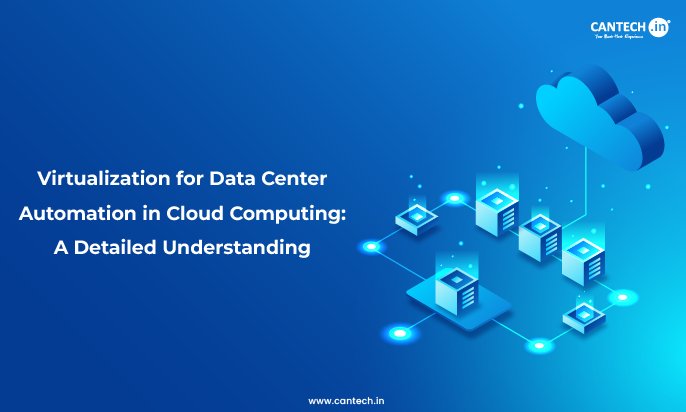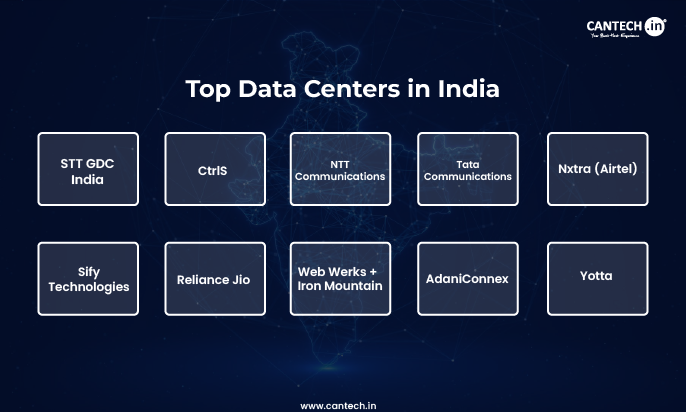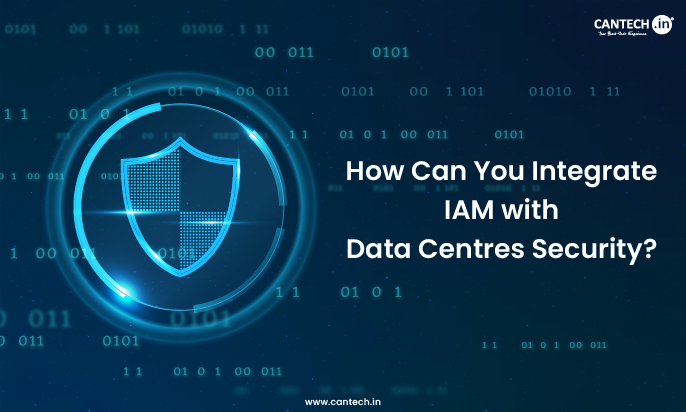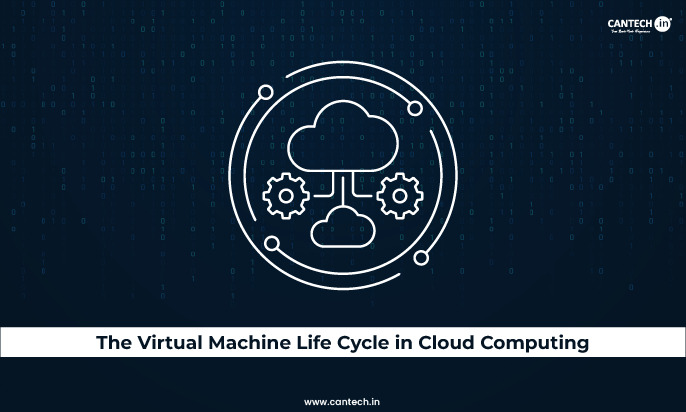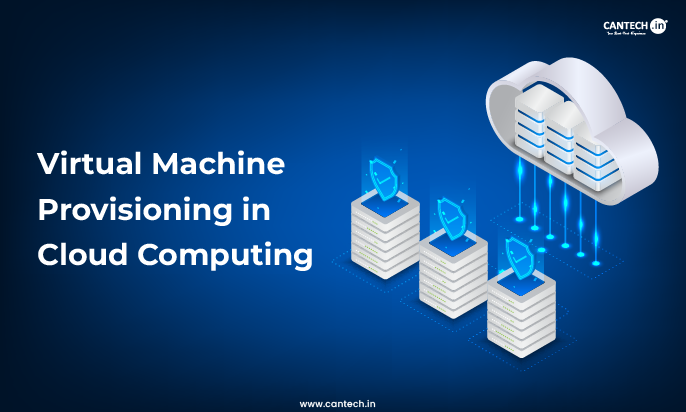Business runs on data. Companies generate massive data in a second, and it becomes hard to manage the hardware setup, i.e., the data center. Manual processes are far too slow; therefore, companies require a smart strategy of virtualization for data center automation in cloud computing. This blog describes what that technology is and why it is a necessity for a modern organization.
What is Data Center Automation and Why It Matters
A data center is a big room containing servers, storage, and networking equipment. Data Center Automation means the application of smart software to carry out routine tasks that would otherwise be handled by a human team.
Significance of Data Center Automation
Eliminates human error – a single typo in a server setup can cause a huge outage. Automation eradicates this risk as the software performs the same instructions repeatedly.
Frees up talented employees – automation takes over the work of routine tasks like adding new servers or patching software, and the experts can work on strategic business tasks.
Makes the business fast and flexible – an automated system can set up a new application server in minutes; when manually configured, it can take days.
Manages the complexity of the cloud – cloud providers manage millions of virtual resources; it takes Data Center Automation to manage that amount of resources effectively.
Reduces power and space expenses – automated systems keep track of server activity and shut down or combine idle machines, which saves on power and cooling.
Virtualization For Data Center Automation In Cloud Computing And its Various Layers
Let’s cover different layers of the concept:
The Virtualized Foundation for the Cloud
Virtualization creates a flexible layer between physical hardware and the OS, which allows a single physical machine to operate numerous isolated virtual servers. This move from physical to virtual enables the complex automation we need in the cloud.
Virtualization started with a simple goal and has since become the foundation technology of the global cloud platforms.
- Server Consolidation in Data Centers was the first benefit.
Previously, all applications needed their own physical server, most of which were not used regularly, and the utilization rate was less than 15 percent.
With virtualization, teams are able to move several servers that are not fully utilized and place them on one high-capacity physical machine. This instantly saves them the hassle of buying and maintaining several machines.
- The shift to a virtualized data center in cloud computing
The emphasis now is on saving physical space, but more than that, it is on building resources that can be moved, copied, and managed all through software. Thus, the environment really becomes elastic and cloud-ready.
The Virtual Storage Management Concept
Storage was previously attached to a specific box. This would consume space, and then you would need a new disk, which had to be physically installed. This process was slow and complicated. Virtual Storage Management removes that obstacle.
- A huge pool of storage
All your physical disks, from many different storage units, are combined into one logical pool – commonly referred to as Software-Defined Storage (SDS). This pool is viewed by the cloud OS as a single huge resource.
- Automated provisioning
When the automated system creates a new virtual server, the system slices a portion of the shared storage for the new server in real time and without the involvement of a human being.
- Easy data migration
In case a virtual server must be migrated to a different physical machine for maintenance, the storage follows smoothly with Virtual Storage Management, and no downtime is experienced with the same.
Infrastructure Automation
Virtual servers together with virtual storage are the real source of infrastructure automation, and the magic of cloud speed occurs here.
- Automated resource provisioning is instant
Need ten new test servers and network connections? One script or API function executes the entire process. The hypervisor creates VMs, and the storage system assigns disk space automatically with the infrastructure automation.
- It maintains a consistent environment.
Manual provisioning creates a minor variance between the servers. Automation employs templates or images – the same each time, which eradicates the ‘it worked on my machine problem and improves reliability.
- It supports automated scaling.
In case the traffic of the websites increases, the software identifies the rise and creates duplicate virtual servers and pulls in the new resources out of the pool to handle the extra load. Once the traffic returns to normal, they shut down.
This automation of the whole lifecycle of virtual resources gets defined when we elaborate virtualization for data center automation in cloud computing. It enables the IT team to respond to business needs at the speed of software.
Cloud OS and Centralized Control
A virtualized data center has many different parts, like servers, storage, network, etc. They need to be synchronized. This is coordinated by the core OS of the cloud, which allows the centralized control required to achieve high-level Data Center Automations.
The Cloud OS for Virtualized Data Centers
This is the brain that manages all virtual resources. Cloud OS for Virtualized Data Centers converts high-level requests, like the addition of a new web server, into physical actions on the data center hardware.
This intelligent software system does the following:
- Schedules and allocates resources dynamically
The Cloud OS constantly monitors the load of every physical server. In case a server gets overloaded, the automated system will transfer some of its virtual machines to a less-occupied server. This active redistribution maintains the performance at a good level for all.
- Manages elastic scaling
The Cloud OS automatically spins up new virtual servers using pre-built templates when an application requires additional capacity. The additional servers are automatically eliminated when the demand decreases. In this manner, you only utilize and pay what you really require.
- Facilitates automated maintenance
The Cloud OS uses functions like live migration in case a physical host needs a software update. It moves all the running virtual servers off that machine without halting their applications. Therefore, maintenance happens with no downtime for the users.
- Provides a self-service portal
This system allows developers and end-users to request their own virtual resources via a simple web interface. This self-service accelerates the deployment of projects and is a requirement to enable efficient infrastructure automation.
Data Center Infrastructure Management (DCIM) Joins the Cloud
The physical building is relevant even in the cloud environment. Power and cooling are required by servers. These are the physical facility elements for which Data Center Infrastructure Management (DCIM) tools are important.
- DCIM monitors the cooling and power
DCIM monitors the power consumption of each rack and the temperature of the server room. It is aware of the precise capacity that can be used before a room overheats or a circuit breaker goes off.
- It offers smart placement data to the Cloud OS.
The Cloud OS for Virtualized Data Centers utilizes the DCIM data to intelligently place the new virtual servers. Instead of placing a new virtual server anywhere, it places it where there is adequate power and cooling.
- It promotes energy efficiency policies.
In case a part of the data center is running extremely cool, DCIM and the Cloud OS coordinate. They consolidate the virtual machines into that cooler space and can switch off the cooling of unused spaces. This continuous optimization is used to maximize the efficiency of virtualization for data center automation.
- The combination guarantees both physical and virtual alignment.
With the integration of the Data Center Infrastructure Management (DCIM) with the Cloud OS, the data center achieves end-to-end automation. They link the virtual world of software to the physical world of facility engineering, which makes the virtualized data center in cloud computing stable and cost-effective.
Trust Management in Virtualized Data Centers
When you shift to the cloud, your data, applications, and other customers’ data are stored on shared hardware. Thus, security and trust are needed in this multi-tenant environment. Trust Management in Virtualized Data Centers is a specialized security discipline that deals with these issues and makes the virtual environment trustworthy.
This final layer of assurance makes virtualization for data center automation in cloud computing reliable for sensitive applications and ensures that the virtual environment is as described, which is important with sensitive applications.
This will provide confidence to migrate important systems to a shared cloud platform by combining virtualization for data center automation and high security.
- Guaranteeing Integrity from the Hardware Up
The security should begin with the lowest level, which is the physical hardware, and ascend to the virtual machine.
- Establishing the “Root of Trust”
A Trusted Platform Module (TPM) is a special chip frequently found in modern hardware. The TPM loads cryptographic keys and authenticates the integrity of the core software-hypervisor before it even starts running. In case the hypervisor is compromised, the system does not boot up virtual machines.
- Ensuring VM Isolation
The primary task of the hypervisor is to ensure perfect separation between different virtual machines. In case a VM is compromised, the attack must not be able to spread to other VMs on the same physical server. This intense isolation is one of the main aspects of trust Management in Virtualized Data Centers.
- Securing the Virtual Images
Every virtual server is based on a template or image. The system will authenticate the image every time it is deployed to ensure that malicious code is not introduced into a new server in a hidden manner.
Advanced VM-Based Intrusion Detection
Traditional security solutions do not perform well in the virtual environment. The virtualization layer is used as a security benefit in new methods.
- Intrusion Detection outside the Guest OS
The detection system is executed in a highly privileged security VM instead of being executed within the vulnerable virtual server (Guest OS). A hacker will not be able to shut down a monitoring system even in case he/she take control of a target VM.
- Monitoring without Interference
The security VM monitors the memory and activity of all the other VMs on the server and identifies any malicious activities without impacting the performance of the running applications.
- Automated Response and Remediation
The virtualization for data center automation system operates immediately when a threat has been identified. It can pause the affected VM, take a forensic snapshot, and overwrite it with a clean copy. This automated security response ensures the uptime and security of the data center virtualization in cloud computing platform.
Related article: What is Data Center Virtualization?
Conclusion
We have discussed the layers that constitute the modern virtualization for data center automation in cloud computing. From the basic Server Consolidation in Data Centers to the advanced security controls of Trust Management in Virtualized Data Centers, every component is needed.
The manual data center management cannot be sustained any longer due to the ever-increasing demand for speed, cost reduction, and ensured uptime. The future of IT lies in the total automation of the infrastructure lifecycle.
A basic shift in the delivery of IT services is evident when you elaborate virtualization for data center automation in cloud computing. Those companies that embrace this approach of infrastructure automation will dominate the digital economy, with an advantage of agility, scalability, and cost control over their competitors. With the implementation of the principles of Cloud OS for Virtualized Data Centers and intelligent security, any company can transform IT from a cost center into a powerful engine for innovation.
FAQs
What is the main difference between virtualization and data center virtualization in cloud computing?
Traditional virtualization focused primarily on running multiple operating systems on one physical server for Server Consolidation in Data Centers. However, data center virtualization in cloud computing uses virtualization across all resources, including compute, storage, and networking, and manages them via a centralized system like a Cloud OS for Virtualized Data Centers. It is not simply a matter of consolidation, but rather of providing on-demand provisioning and scaling that is highly automated.
How does Data Center Infrastructure Management (DCIM) fit into the automation?
Data Center Infrastructure Management (DCIM) focuses on the physical layer of power consumption, cooling, and space. It provides real-time data on the environment to the automation software. This integration allows the automation system to make intelligent decisions, like placing a new virtual server where there is proper cooling, better energy utilization, and hardware failures.
What is the Trust Management in Virtualized Data Centers?
Trust Management in Virtualized Data Centers protects against unauthorized access and tampering within the virtual environment. It makes sure that the hypervisor (core virtualization software) is not modified and that one virtual machine cannot access or interfere with another virtual machine or its data. This is a vital feature in a shared virtualized data center in cloud computing environment.
How does a company begin to implement Infrastructure Automation?
The first step a company undertakes is to fully implement virtualization for data center automation. They need to adopt a comprehensive virtualization platform across compute, storage, and network resources.
It then picks and deploys an orchestration layer or a Cloud OS for Virtualized Data Centers. It must initially automate the simple and repetitive processes, such as VM provisioning and patching, and then slowly transition to the complex processes, such as automated disaster recovery.
What is Data Center Automation in simple terms?
Data center automation involves software to carry out daily activities automatically, such as making servers, updating software, performing data backup, and workload mobility without human intervention. They are all handled by software scripts and programs. This results in faster, more accurate, and much more scalable operations.
